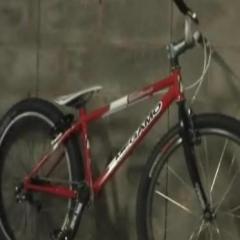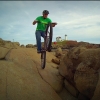-
Posts
603 -
Joined
-
Last visited
-
Days Won
58
La Bourde last won the day on April 21
La Bourde had the most liked content!
Contact Methods
-
Website URL
http://
Previous Fields
-
Bike Ridden
Stock
Profile Information
-
Interests
Stock trial, Computer science.
-
Location
France, on the rocks
Recent Profile Visitors
10669 profile views
La Bourde's Achievements

Trials King (4/9)
267
Reputation
-
I had 3 Hope pro IV and never had a problem. But I did not run them on an Inspired Hex. I had one on my NS majesty park, one on my Merida street/trial prototype, another one on the different DJ frames I had over the years. I think I run the oldest one for 7-8 years now. And I used to ride almost every two days for many years. But all frames feel less stiff than the Hex. Two friends broke also their pro IV hubs, the engagement ring failed too. Yohan Triboulat had also issue with them. Maybe it is just a matter of time.
-
You mean to replace a trialtech freewheel ? I ride a Hashtagg 135 screw-on (the one with industrial bearings) freewheel on my hex, works great but it creaks sometimes, annoying for this price tag. No skip though. The drag is unfortunately quite high. I sometimes consider buying a hope pro V, but the feedback of some discourages me. I never encountered an issue with the previous generation, maybe I shall give it a try!?
-
Hi! Just add that street/trials boosted a lot the market first but at the end split even more a small community: comp bikes are a pity to ride but amazing to sidehops, up to front, etc. while street/trials are so short, they spin almost like BMXs but are difficult on natural playgrounds. I think you saw the premises of all of these, but the consequences are that comp trial seems unreachable for a mortal (dedicated bike, unbelievable skills, small group of weird passionates) while street/trials is no longer appreciated as its value: too many edits were so cheesy, it feels it is no longer a sport but an entertainment for the whole family (that is not the case for all edits thankfully) At least the bikes are amazing now for what they were designed for!
-
Thanks a lot. I bled my Shimano brakes in the past with Putoline HPX too. And you are right, it is easy cheaper and works great. I never had strong wandering point on my Shimano brakes (even with the delivered oil). Some of them were slight leaking though. I like the ergonomic of Shimano levers but prefer the magura callipers with their simple retention system. I do not appreciate the lack oft stiffness of the 501 lever series. I found the m6000 much better in this regard. On drops, don't you hit your finger with the blade? Maybe you use Sugru? Let see if I pair an old SLX M666 lever to some magura callipers the next few months ... Hope for the best. I am still a big fan of the bb7 though, even with the quite spongy feel and difficult actuation. They are so reliable, easy to fix and install.
-
Are you using standard MTB Deore levers vor the trekking Version? If you use the MTB version, don't you wandering bite point? I built brakes with an old Louise levers with mt calipers. I did not ride them much but it felt first OK for my weight, even if I would appreciate more power. Maybe better brake pads. The Louise levers are unfortunately known to break quite easily. It seems companies still struggle to build a disc brake... Maybe they shall focus on function instead of weight and bling.
-
Amazing! I owned one, built with modern parts: 100mm high rise bar, 70x25 stem, hope pro 4, shimano cranks. It was a beast in manual! Easy to throw due to the short top tube but easy to stay in manual due to the long chainstays. I really enjoyed riding it, even if the top tube was really short (pure trials moves were more difficult).
-
Centerlock is superior from an engineering point of view (the rotor does not twist due to misalignment, it is even safer cause the rotor cannot leave its interface - there is no enough place) but it requires a really good execution, which is sadly often not the case. I had some issues with centerlock, like the spline interface of a DT Swiss hub was too wide and it was almost impossible to fit a Shimano rotor on it. I had also the opposite, the Shimano rotor was really loose on a centerlock hub. And in trials, the rotor came loose regularly. I have to admit I had also some issues with 6 bolts, like bolts getting loose suddentdly after riding the megavalanche track in La Réunion: I rode these wheels and rotors many months without issue but somehow they came loose on that day. I also stripped the head of a bolt, the quality of this specific bolt being really low.
-
I agree, it would be nice to have reach and stack values for the bikes. Somehow wheelbase length seems to be more important in trials... One can interpolate how much is the reach knowning the head angle, bb height, chainstay, headtube and fork length, but it is not really precise. Bar height relative to the bottom bracket is an important figure to understand how the bike is easy to bunny up. Effective reach (with the backsweep the bar considered) but also bottom bracket height compare to the wheel axle and width of the bar (if the difference is more than a few inches/cm) play also a role. As I wrote earlier, always consider the weight distribution and the amplitude of movement you get.
-

Rear hubs, which is most reliable, hope, i9 ect
La Bourde replied to Damon_Watson's topic in Trials Chat
The KOM Xeno hub looks very promising to me. Ali C is now sponsored by them. Hope he will ride one on his Hex and give some feedback. -
BB height: the higher the bb is: the easier it is to stay on the rear wheel or to move on the rear wheel, the easier it is to spin, the harder is it to stay balance on two wheels or once you are in manual (less stability) Chainstay length: the shorter the chainstay, the easier you can go in manual or lift the front wheel, the easier you can move the bike on the rear wheel the less time you have to lift the rear wheel, e.g. when climbing a step, you have slightly less time to execute your extension wheelbase: the longer the more stable the bike feel on two wheels the more time you have to lift the rear wheel (see chainstay) the harder it is to put weight on the front the harder it is to move on the rear wheel or spin the most place you have to execute an extension it can ease tap or rolling onto high obstacle Regarding the other factors, it is difficult to explain clearly. I think it is important to understand that: every change in the geometry is a compromise mostly a single change impacts the whole system (and thus feeling) it is all about weight distribution and lever effect stabilty or maniabily: you cannot have both at the same time amplitude and reaction time shall also be considered stiffness impacts also the overall bike feel Consider weight distribution and lever effect and you will better understand how each factor affects the feeling of the bike. Let's take some examples: if you rise the bottom bracket, your center of gravity is now slightly higher compared to the rotation axle that are the wheel axles. It means, your body has an higher lever effect when you move it backwards for example. So a front wheel lift is easier ... sort of because there is another important point to consider: by raising the bottom bracket, you basically load more the front with your mass (you have more weight on your arms). This makes the front wheel lifting for the first centimers/inches more difficult ... To compensate that, you can raise your bar. It will be easier to lift the front wheel, but more difficult to load it, i.e. front moves will become more difficult. And because you increase the distance between bottom of the front wheel and your arms, you have less place to low down you front wheel before jumping, which is also a drawback ... if you put your bar further away on an horizontal axle (i.e. same height) : you have now more place to execute an extension, so the amount of work you deliver is higher. But also you need to move more to load you front wheel, which is maybe more exhausting. You can put more weight on the front wheel if you are able too. On the otherside, it makes raising the front wheel more difficult, cause your center of gravity is slightly more forwards and your arms are more stretched if you use a wider bar: the bike is more stable, it lower your chest, you load more the front wheel. But amplitude of movement of you upper body decreases (the arm being futher apart) and because your body if further from the axle of rotation, it is harder to spin. Hope it helps!
-
I use a magura louise lever with mt4 caliper combo for several weeks now and it feels OK to me. Better that with the original mt4 lever. The louise lever have some drawbacks too, e.g. they are not as strong as other maybe, but I am happy with them currently.
-
It seems the piston expands when in contact with water for a long period. The info is from Adam from Tarty if I recall correclty. There is not much to do I think.
-
Go for a Hashtagg freewheel then. One requires the ISIS tool to remove them: Alternative, find a fixed hub with spline body or a crankset like the bonz one: https://www.trial-bikes.com/en/bonz-pro-light-bb24-crankset-p-537672.html I think using the Hashtagg freewheel makes more sense for you, it will be easier to fix compare to the bonz freewheel. If you want, I have a new Tensile freewheel to sell that also use the ISIS tool. It has only 60 POE. I will be happy to sell it to you.
-

Turning my dmr rhythm into a hybrid street trials bike
La Bourde replied to Alc2's topic in Beginners Trials Chat
I suggest a Hope Pro V (or even pro IV or pro 2 evo 40t) ss/trials or maybe Industry Nine (really expensive). Do you have the 142 or 135 rear ends installed currently? If you have the 135*10, you can also buy a trial hub and a freewheel. That might be slightly less expensive. If the price difference is not much, I would rather go for a hope hub. Regarding the rims, I have a good experience with DT swiss, either the ex471 or fr560. Nice build quality. Spank has a good reputation too. -

Turning my dmr rhythm into a hybrid street trials bike
La Bourde replied to Alc2's topic in Beginners Trials Chat
Hi, Difficult question. Why do you want to sell the bike at all? DJ, skatepark or street is not what you were looking for? Trials or street/trials require a specific bike past a certain level, but you can learn the basics with any bike. Some bikes are easier to start with for sure, but the question is whether you will stick to it or not. A I was moderator on a French trials forum, I observed too often people selling their bikes after one year of trials. My advice is to start with your bike as this and learn trackstand, bunny, manual, getting up some small steps, bunny to rear, 180, riding backwards, hoping on the rear wheel backwards and if you have a front brake, stoppies, bunny up to front, 180 on the front wheel, etc. As soon as you really feel addicted, ask yourself again how do you really want to ride. Meet people owning one and ask them to ride with. I think you won't find easily a driver with 15t compatible and even in this case, the small amount of points of engagement is a big drawback. You can swap for a rear wheel with e.g. hope hub but it is quite expensive. On the other hand, it is a nice hub for a DJ bike too.






